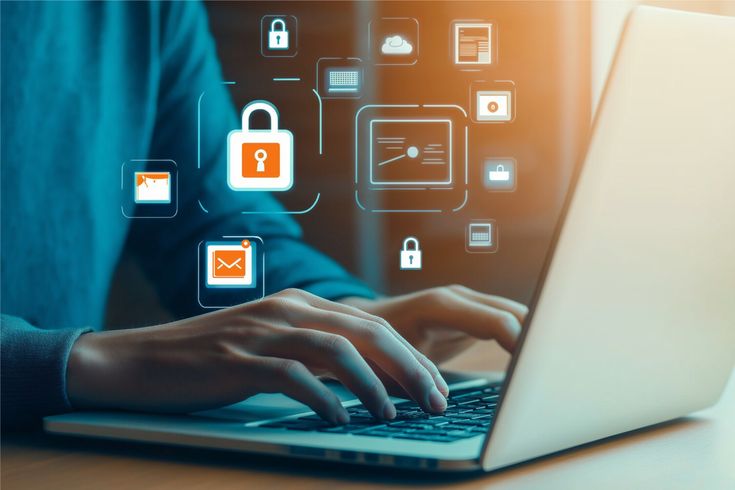Cybersecurity protection serves as an organizational necessity instead of a best practice due to the sensitive nature of this modern data-centric environment. The right cybersecurity protection strategies become crucial to secure you against digital attacks that include both data breaches and identity theft, and financial loss.
Various Reasons To Prioritize Online Security Protection
You will need to know what puts you at risk. This uptick in digital activity — particularly in our personal and professional environments — has made sensitive information a popular target. Whether via social media, online banking, or just day-to-day activity, cybersecurity protection is the vital screen we all fall back on when something unexpected happens.
Common Cybersecurity Threats to Watch Out For
Anyone using the internet is vulnerable to lurking threats online. Here are some of the biggest cybersecurity threats that are gaining ground in 2025:
- Phishing Attacks: Emails or messages that trick you into providing personal information.
- Ransomware: A type of malicious software that locks your files until a ransom is paid.
- Data Breaches: High-profile leak of customer or user data from large platforms.
- Malware & Spyware: Programs, including viruses and keyloggers, used for covertly tracking your actions on the device.
- Social Engineering: Manipulating humans to obtain sensitive data.
These threats are getting more sophisticated, and cybersecurity protection has become essential for all— from individuals to multinational companies.
Smart Password Practices That Work
Your password is the key to your digital home — make it uncrackable. Weak or repeated passwords are the number one way to get into your accounts. Here’s how to secure them:
- Use Strong Passwords: Use Uppercase, Lowercase, Numbers, and symbols.
- Enable Two-Factor Authentication (2FA): One more check to verify your identity.
- Avoid Reusing Passwords: Each account should have its password.
- Use a Password Manager: Programs such as LastPass or Bitwarden save and create strong passwords.
Strong password hygiene is a basic but highly effective type of cybersecurity protection.
Keep Your Devices and Software Updated
Patches address vulnerabilities before hackers can leverage them. Outdated systems and software are often targets of hackers. Make sure you:
- Enable automatic updates on all your devices.
- Keep your anti-virus and anti-malware tools up to date.
- Apps should be downloaded only from trusted sources.
- Do not use on unsupported operating systems (e.g., Windows 7).
Regular updates are essential to the protection of your cyber network security system.
Secure Your Wi-Fi and Network
The two, your home network and your office network, are a portal to your online existence. Securing your connection is an important way to ensure you remain protected by cybersecurity:
- Change the name of the default network (SSID).
- Make Wi-Fi password strong and change it regularly.
- If supported, use WPA3 encryption.
- Create a guest network for guests.
- Disconnect your router when not in use.
It improves your complete cybersecurity network security and foils intruders.
Be Cautious with Emails and Downloads
Most cyberattacks begin with a careless click. Do not trust an email attachment or link unless you are certain of the source. Here’s what you can do:
- Megaphones and jailing civil disobedience are useless against emails sought for their grammar or spelling mistakes.
- Check the real URL by hovering over links before clicking.
- Don’t download files from sites you don’t know.
- Always run files downloaded through antivirus software.
Cybercriminals depend on human mistakes. Be alert, and you’ll be safe.
Schedule Regular Backups Like They Are Your Digital Insurance
Losing data can be catastrophic—but it doesn’t have to be. Regular backups are essential in any cybersecurity protection plan. Follow these habits:
- Set up backups weekly or even daily.
- Back up files in local (external hard drives) and cloud storage.
- Add encryption to your backups for extra security.
- Perform restoration tests to validate that backups are restorable.
Even if you’re attacked, you won’t lose everything if your data is safely stored.
Invest in Professional Cybersecurity Tools
Free tools may help, but paid tools provide real protection. Top-rated antivirus software, firewalls, and VPNs can dramatically boost your cybersecurity protection. Look for solutions that offer:
- Real-time threat detection
- Secure browsing and anti-tracking tools
- Data breach monitoring
- Cross-device compatibility
A small investment now can save you from huge losses later.
Educate Yourself and Your Team
Human error is the weakest link in any system. Whether you’re protecting yourself or managing a team, awareness training is vital. Organize:
- Quarterly cybersecurity protection training sessions.
- Simulated phishing attack exercises.
- Guides on password safety and data handling.
Awareness is one of the most powerful cybersecurity protection tools available.
Conclusion
When cyberattacks strike, there is no warning, which makes being careless the most dangerous stance. Successful prevention of cybersecurity threats emerges from being proactive. Keep your systems updated, use secure tools, and never stop learning. The world of cybersecurity protection evolves daily, and so must your defenses. From reinforcing cybersecurity network security to building smarter digital habits, each small step can keep your personal and professional life safe in the digital realm.
